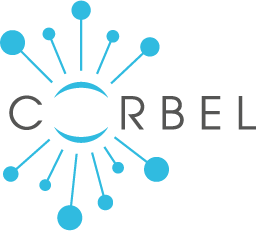Correlative light electron microscopy (CLEM)
Correlative light electron microscopy (CLEM)
Description
CLEM (Correlative Light Electron Microscopy) combines the capabilities of two typically separate microscopy platforms: light (or fluorescence) microscopy (LM) and electron microscopy (EM). The advantage of LM is that it can provide wide field images of whole, often living, cells, but its resolution is limited. The advantage of EM is that it can provide much higher resolution images, up to molecular dimensions, but only over specific regions of a cell at a time and not in living cells.
CLEM combines the advantages of both techniques, allowing scientists to spot cellular structures and processes of interest in whole cell images with LM and then zoom in for a closer look with EM.
One can distinguish between different kinds of CLEM and the service providers should be consulted to learn more about their specific field of expertise:
- from live cell imaging to EM: the cells are imaged live by light microscopy - any kind of light
microscopy is suitable here, it can be wide field, confocal, light sheet, etc. Following this light
microscopy image acquisition, specific CLEM protocols enable the scientist to retrace the
position of the same cells in order to acquire EM images - and here again, any kind of EM can
be foreseen.
- intravital CLEM: this is one specific application of the above CLEM, where full organisms such
as zebrafish or mouse embryos are imaged in vivo. By 3D targeting, the same region of
interest is extracted and imaged by EM (any of the 3D EM techniques listed above).
Note: Users have to perform intravital fluorescence imaging at their home institution and take
the acquired 3D data with the respective samples to the service provider, where the
structures under investigation can be targeted via EM. Please note that this technology
is not a routine service yet.
- high-accuracy CLEM: the fluorescence from fluorescent proteins is preserved during the sample
preparation for EM (high pressure freezing and freeze substitution). Plastic sections are
collected and screened with a fluorescence microscope. Thanks to fiducial markers, the
precise location of the fluorescent spots is retrieved in the EM enabling the ultrastructural
assignment to the fluorescent marker. The precision of such CLEM is in the range of 50 nm
to 100 nm. Very often, TEM tomography is performed on such samples.
Service provider I
Advanced Light Microscopy Facility (ALMF)
Location
Heidelberg, Germany
Contacts
Scientific contact: Rainer Pepperkok
Technical contact: Stefan Terjung
Service provider II
Cell Microscopy Core (CMC), University Medical Centre Utrecht
Location
Utrecht, The Netherlands
Contacts
Scientific contact: J. Klumperman
Technical contact: G. Posthuma
Correlative light-electron microscopy from live cells to 3D plastic sections
Description
A recently developed workflow allows to link dynamic live imaging of subcellular compartments to 3D EM for providing ultrastructural context. Following this workflow, one can image live cells expressing fluorescent markers, then fix cells in-situ and process them for 3D EM imaging using FIB-SEM. This approach is very suitable to study live-cell organelle dynamics in relation to their high-resolution morphology in 3D.
Service provider
Cell Microscopy Core (CMC), University Medical Centre Utrecht
Location
Utrecht, The Netherlands
Contacts
Scientific contact: J. Klumperman
Technical contact: G. Posthuma
Correlative light-electron microscopy of Tokuyasu sections
Description
Correlative light-electron microscopy of Tokuyasu sections belongs to the “on-section” CLEM techniques, similar to the “high-accuracy" and "cryoCLEM". The difference is on the sample preparation. Here, specimens are chemically fixed, cryo-protected and frozen. The sample is then hard enough to be sectioned by cryo-ultramicrotomy. Next, the cryo-sections are thawed and exposed to probes or antibodies. If fluorescent probes are used, their signal can be correlated to the ultrastructure by CLEM.
Service provider
Cell Microscopy Core (CMC), University Medical Centre Utrecht
Location
Utrecht, The Netherlands
Contacts
Scientific contact: J. Klumperman
Technical contact: G. Posthuma
 shared services for life-science
shared services for life-science